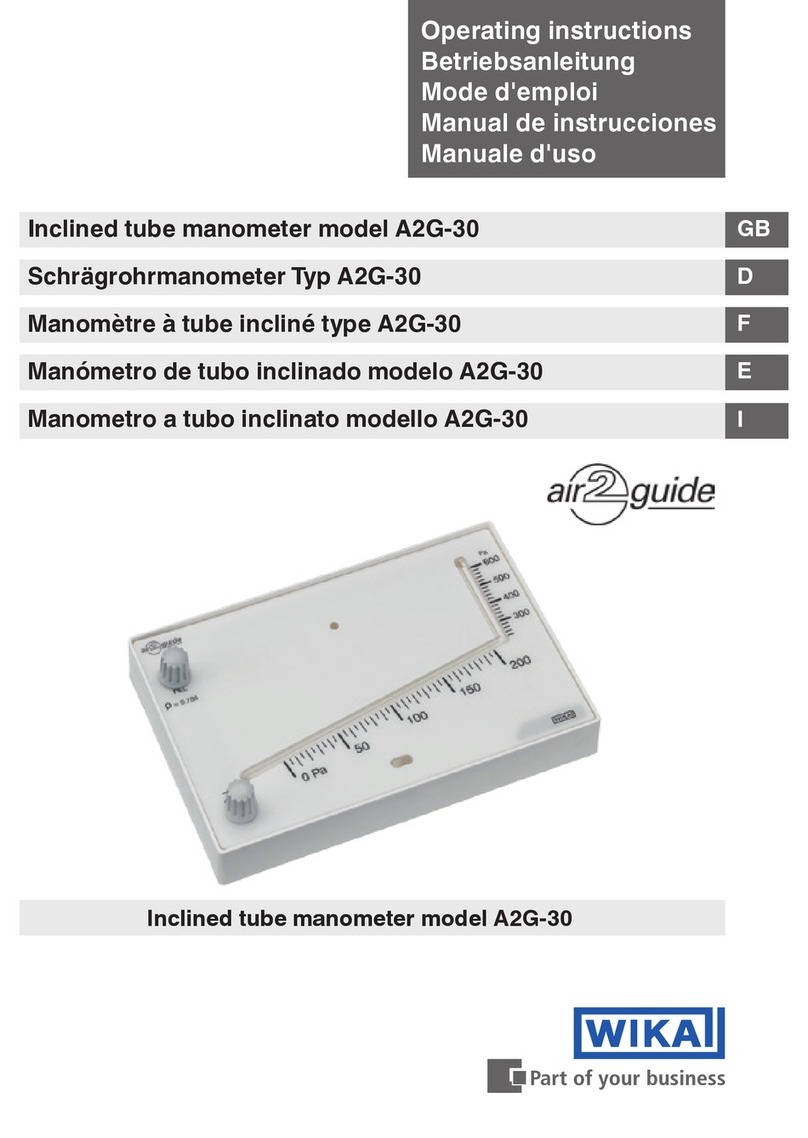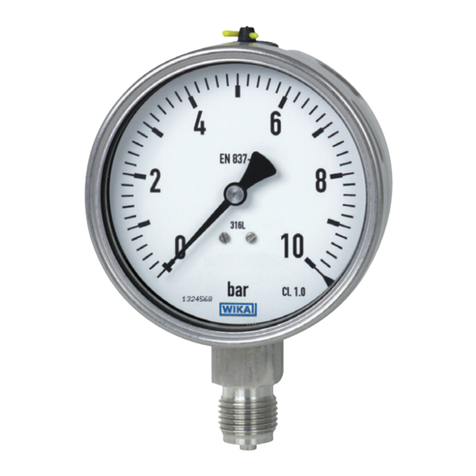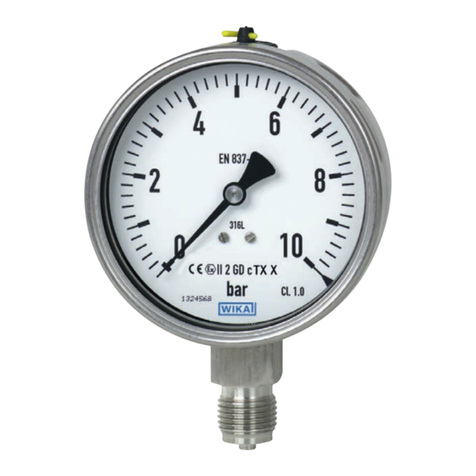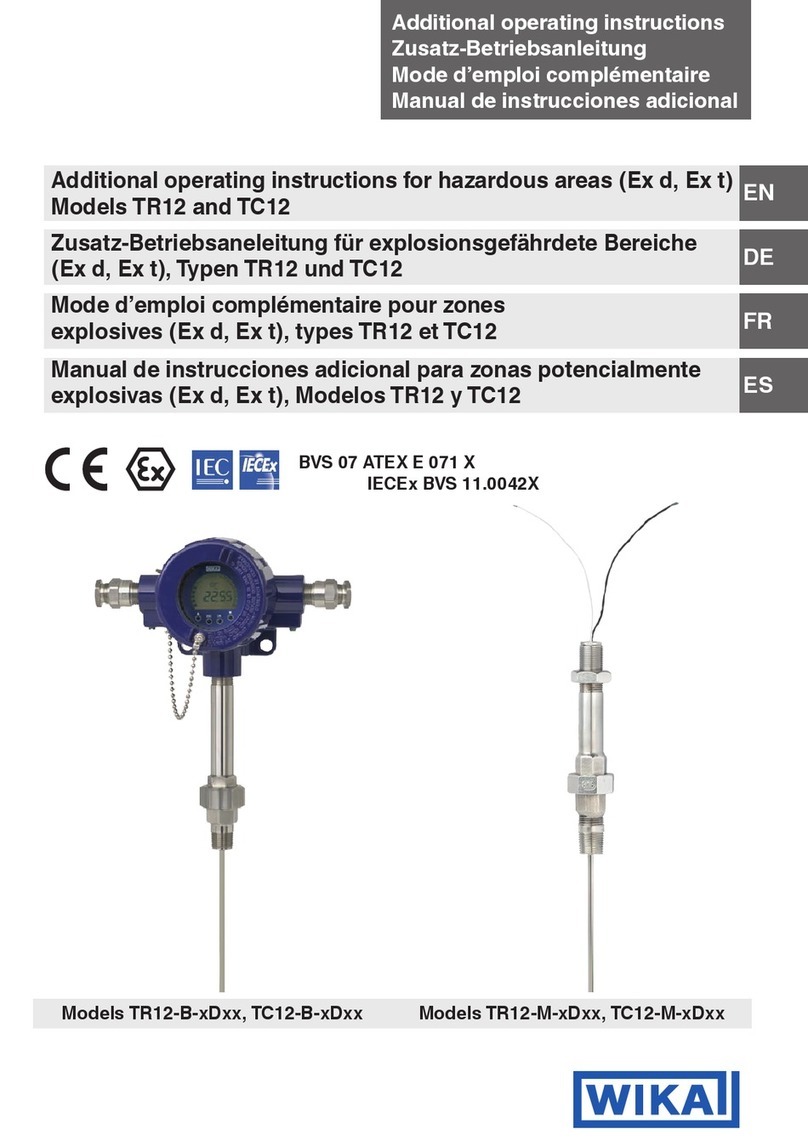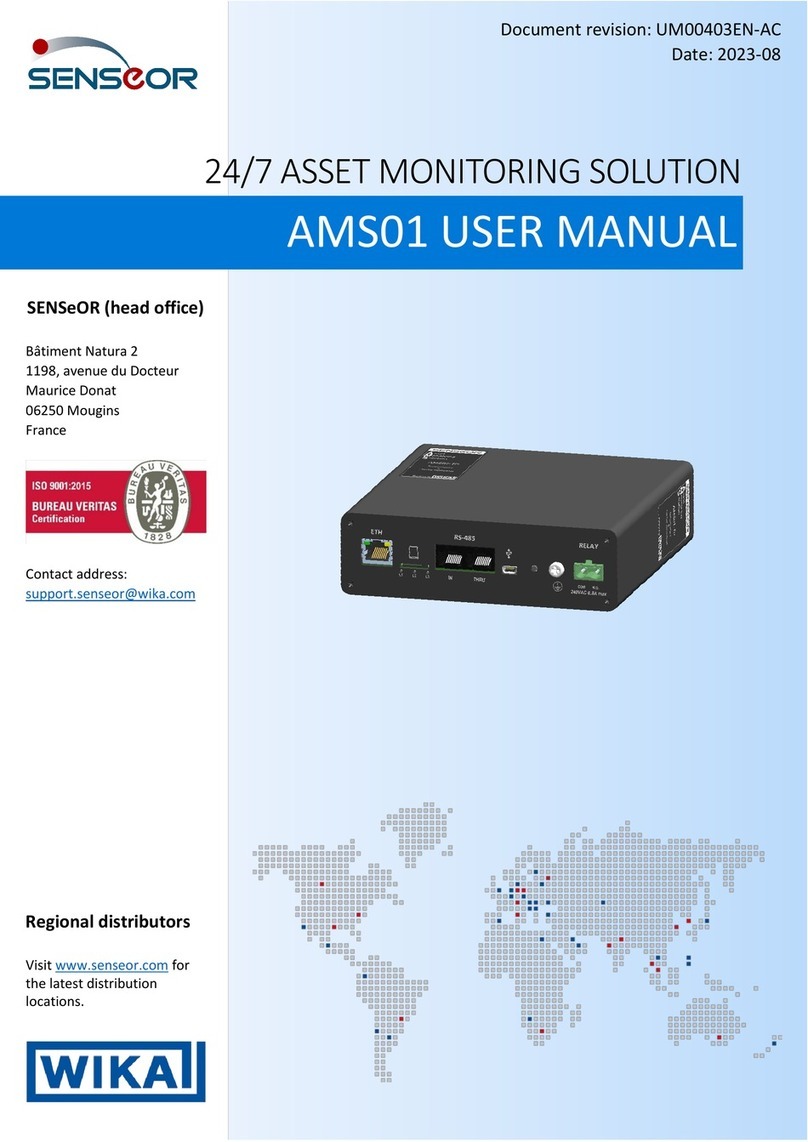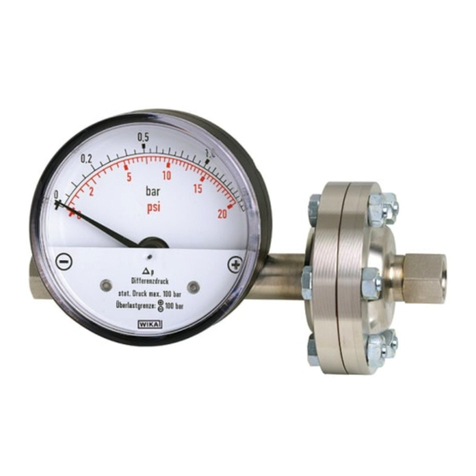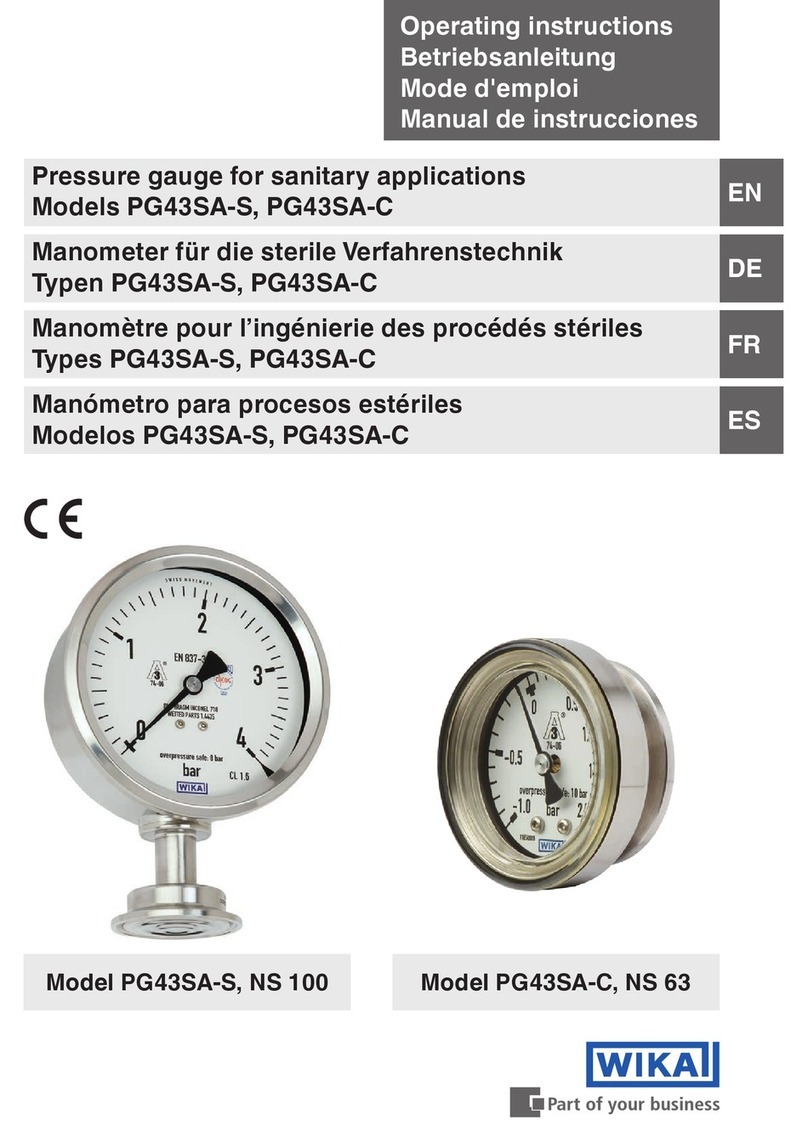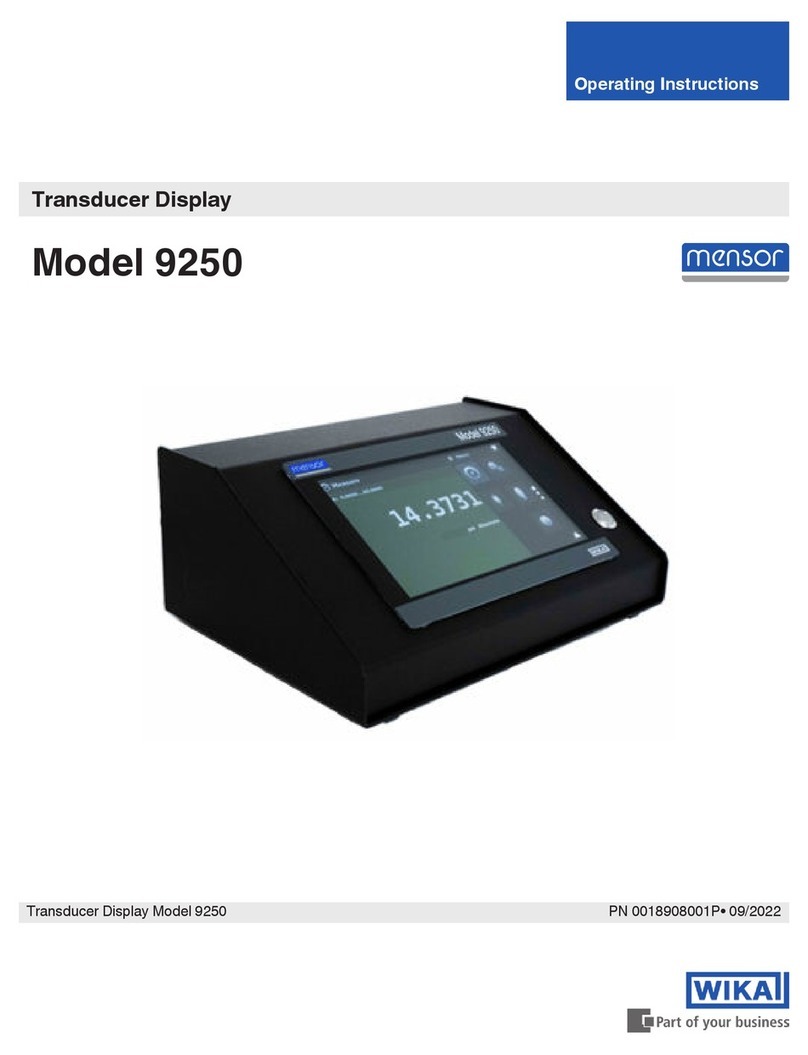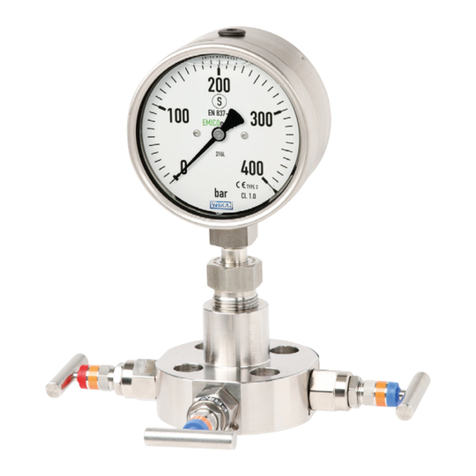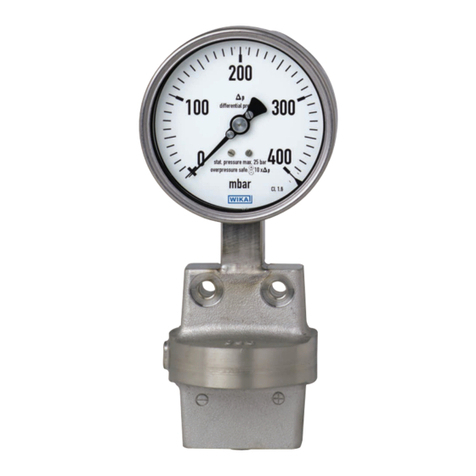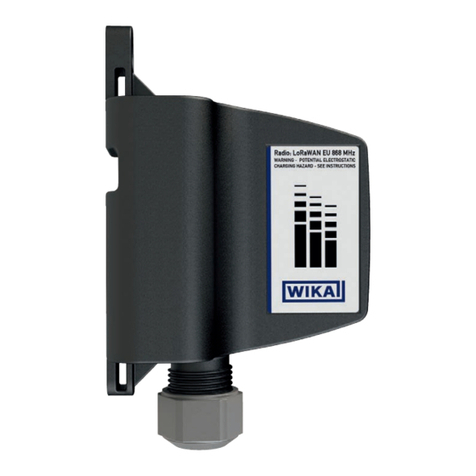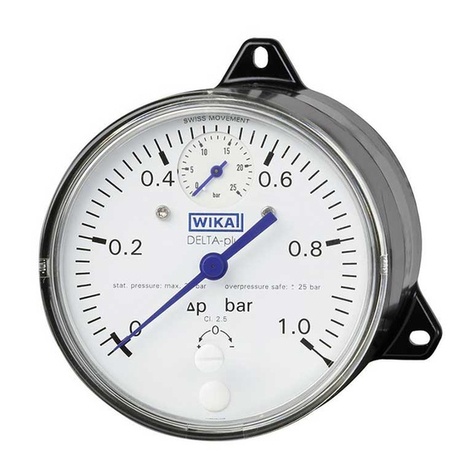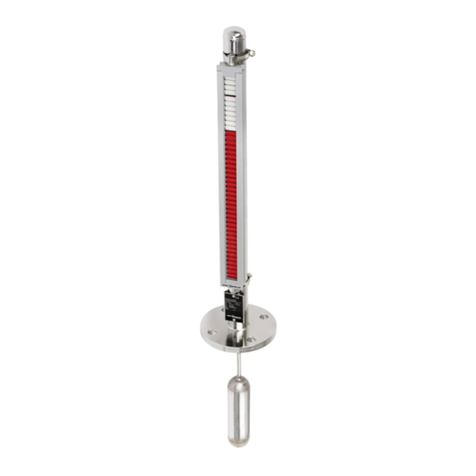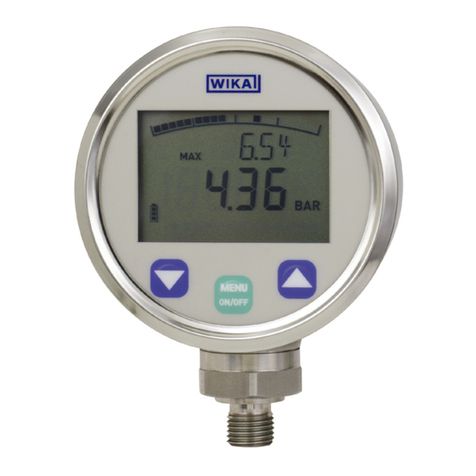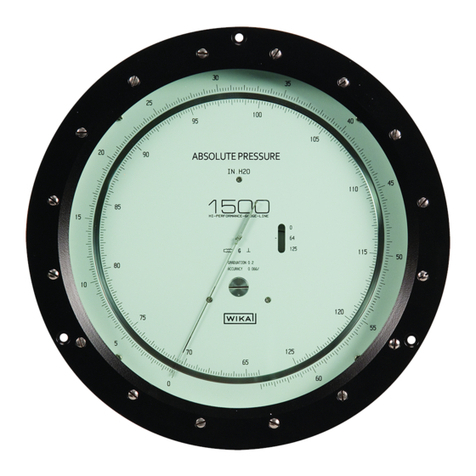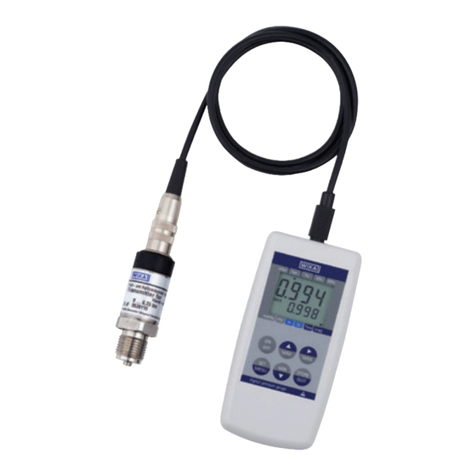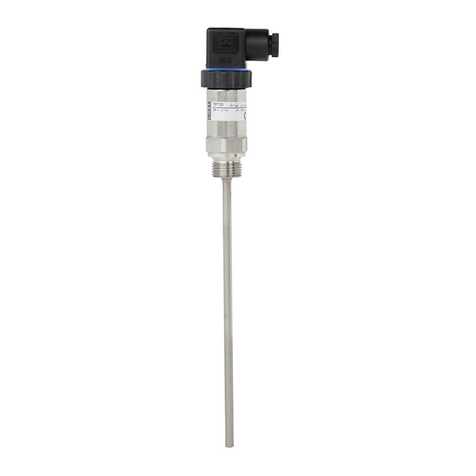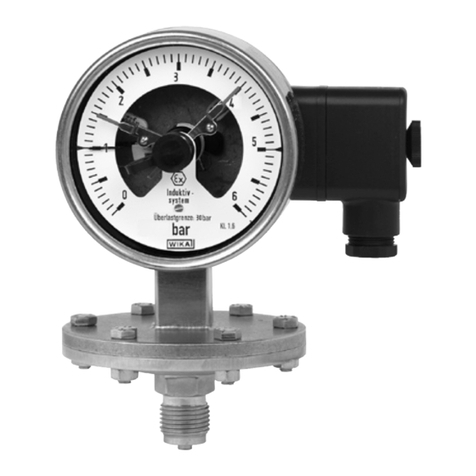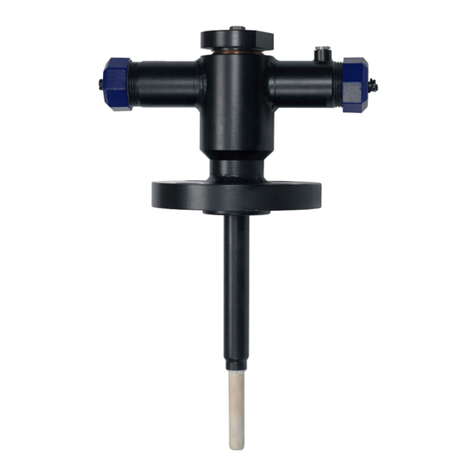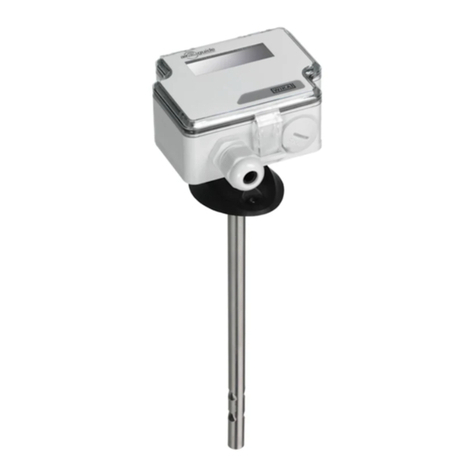
11349167.03 10/2011 GB/D/F/E
WIKA operating instructions intelliGAUGE / switchGAUGE
6
GB
3. Installation instructions / 4. Installation and ...
Diaphragm seal / protective barrier
In case of aggressive, hot, highly viscous, contaminated or crystallizing
pressure media, which must not be allowed to intrude the measurign
element, diaphragm seals have to be used as separating barrier. A neutral
transmission uid, used to transmit the pressure to the measuring element,
should be selected in consideration of the measuring range, the tempera-
ture and its compatibility with the pressure media.
The connection between the pressure gauge and the diaphragm seal must
not be released by no means.
Protection of the measuring element against overload
If the pressure media is subject to rapid pressure changes or pressure
impulses may be expected, these must not act directly upon the measuring
element. The eect of pressure impulses must be damped, e.g. by installing
an integrated restrictor screw (reduction of the cross section in the pressure
channel) or by connecting an adjustable throttle device in series.
Pressure test connection
The pressure test connection, with a suciently large bore size (≥ 6 mm
diameter), should be arranged, as far as possible, over a shut-o device,
in a position where the accuracy of the reading will not be aected by the
ow of the media being measured. The pipe between the pressure test
connection and the pressure instrument should have an inner diameter
large enough to avoid blockages or delays in pressure transmission. Also it
should not have any sharp bends. It is recommended that it is mounted with
a steep incline of approx. 1:15.
Piping
The piping should be arranged and tted so that it can withstand the
stresses caused by expansion, vibration and the inuence of heat. When
the media is gaseous, a water drain point should be provided at the lowest
point. For liquid pressure media, an air bleed should be provided at the
highest point.
4. Installation and commissioning
To acchieve a correct sealing of pressure connections suitable sealing
rings, sealing washers or WIKA prole seals have to be used. In order to get
the pressure instrument into an orientation that allows to read the on-site
indicator the best, a connector with an adjusting nut or an union nut is
recommended.When mounting and dismounting it is not allowed to tighten
the pressure instruments by using the housing, but on the spanner ats of
the stem, only.
